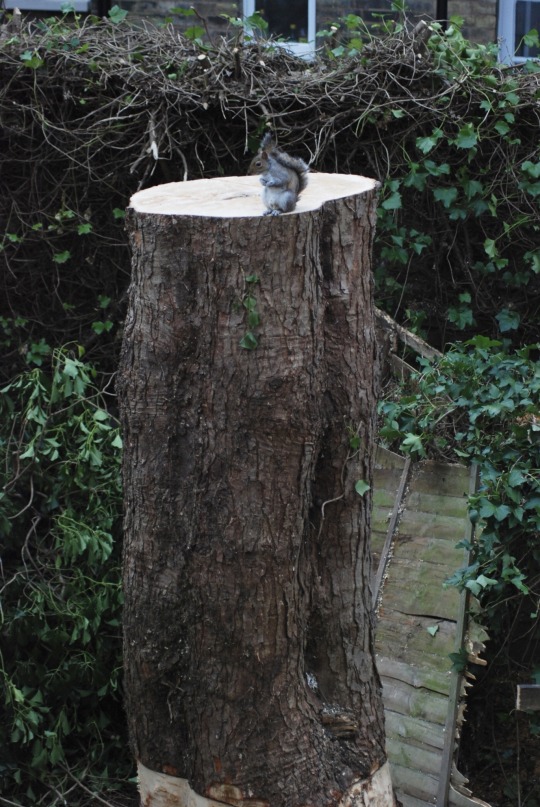#habitat loss
Text
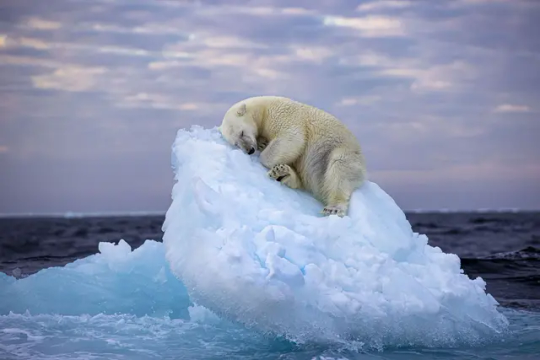
In Dr. Douglas Gurr's words, "This breathtaking and poignant image allows us to see the beauty and fragility of our planet. His thought-provoking image is a stark reminder of the integral bond between an animal and its habitat and serves as a visual representation of the detrimental impacts of climate warming and habitat loss."
This photo is heartbreakingly beautiful. No wonder the ‘Ice Bed’ by Nima Sarikhani won the 'Wildlife Photographer of the Year ' Award.
#polar bears#habitats#climate warming#habitat loss#sleeping bear#touching images#wildlife photography#beautiful nature photography#awww#iceberg#Norway#frozen North#wildlife#wild animals#sleeping animals
155 notes
·
View notes
Text
I always feel a little spark of hope mixed with worry every time a supposedly extinct species is rediscovered. I worry that the population is too small to be sustained. But I feel hope when the immediate response is to protect the place where the species was found, and--when possible--implement plans to reintroduce more from captive populations.
The thing is, though, that we never know where a rare species will turn up. Every acre of wild land that's torn apart for agriculture, mining, logging, development, etc. is an acre that could be hiding something we haven't seen for ages. More importantly, it's not just the rare species that deserve habitat protection, but those that are still common.
I am in my mid-forties. In my lifetime, the planet has lost two out of every three wild animals. If I make it to ninety, and trends continue as they are now, we stand to lose one out of every three animal and plant (and, likely, fungus as well) species entirely by the time my ninetieth birthday rolls around.
Habitat loss is the single biggest cause of species endangerment and extinction. We can combat the losses by protecting the habitat that is left, and restoring it wherever else possible. Even a tiny balcony or backyard native plant garden provides crucial habitat for native insects and other invertebrates which are among the most important beings in the food web. (Here's a chapbook I wrote on the topic.)
Let's keep trying, not just for the earless dragon, but for all the species still with us today.
#extinction#endangered species#habitat loss#habitat restoration#restoration ecology#ecology#animals#wildlife#conservation#environment#environmentalism
283 notes
·
View notes
Link
“There are more than 30 times the number of European bisons alive today than there were in 1960.
Brown bear populations achieved an average increase of 100% – a doubling. For Eurasian elk, this was a tripling. Red deer have increased five-fold, on average.
The Eurasian beaver has made the most remarkable recovery. It’s estimated to have increased by 140-fold, on average. There were likely only a few thousand beavers left in Europe in first half of the 20th century.4 Today there are more than 330,000. This study only included data for studied countries in Europe. When we take Eurasia as a whole, it is estimated that there are well over one million beavers.
All species but one – the Iberian lynx – have significantly increased in numbers. Despite its 50-year decline, there is recent positive news for the Iberian lynx. Over the last decade it has been making a remarkable recovery. So much so that the IUCN moved it from Critically Endangered to Endangered on the Red List in 2015.”
These impressive accomplishments are primarily due to reductions in hunting and habitat loss. Land use for agriculture has decreased significantly in Europe due to more productive agricultural techniques.
#conservation#biodiversity#wildlife#habitat loss#hope#good news#hopepunk#wildlife conservation#mammal conservation#megafauna
1K notes
·
View notes
Text
31 notes
·
View notes
Text
https://youtu.be/eMh0FHUHvnA
If you don't have time to watch the video, what's currently happening in the UK (and many other places) is a refusal to assist any wildlife rehabilitation efforts (both public and private) in reintroducing keystone (regulatory) species like beavers, wolves and elks in the habitats where they have gone locally extinct. This means that many of their functions have to be replaced with human labor, meaning delays, reduction in scope and budgetary deficits. We lack the ability to organize what we see fit to be done, the ability to account for all variables and the decisiveness to implement what few things do pass those 2 checks. Every day we neglect to do what we can to help any habitat help itself, we add to our ignorance, deficits and window of time.
Not that gocernments can be trusted to do much in a helpful or speedy manner, but passing the petition at least gives a fighting chance to the most obvious solutions.
28 notes
·
View notes
Text
https://www.washingtonpost.com/climate-environment/interactive/2023/firefly-summer-extinction/
Summer is here. Where are the Fireflies?
37 notes
·
View notes
Photo
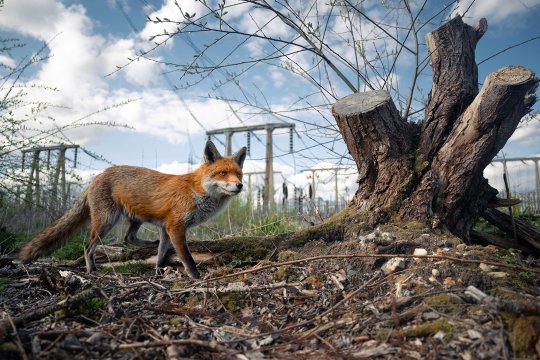
Charlie Page, ‘A Look At The Future’, Overall Winner: British Wildlife Photography Awards (BWPA) (2023)
“Red fox. Lee Valley Park: I knew this area was reliable for foxes, and I wanted a shot with the industrial backdrop. One day when setting up my camera with a remote shutter release, a fox approached from my left. Hesitant about what to do, I stayed still, and surprisingly the fox stopped right in my frame. I took the shot but was confused why it had come so close. In hindsight, this encounter probably tells the story more than the photo itself. Wildlife has become used to us encroaching on them. I think the felled tree and longing look on the fox’s face portray this tragedy perfectly. I hope that all wildlife photography doesn’t look like this in years to come.”
#charlie page#photographers#british wildlife photography awards#bwpa#red fox#animal photography#destroyed habitat#habitat loss
60 notes
·
View notes
Text
Are fireflies going extinct? Why lightning bugs may soon flicker out.
34 notes
·
View notes
Text
I'm livid. Attenborough played a large part in me deciding to follow ecology and conservation as a career path! The episode that's being withdrawn is about the destruction and rewilding of British natural habitats, which the general public need to see! Pandering to right-wing morons, who do nothing but bury their heads in the sand and pretend that they've got nothing to do with it, is not how we're going to fix it! The world is suffering biodiversity loss on a huge scale and more awareness means more likelihood of people coming together to find solutions! I've never been so disappointed with the BBC...
#bbc#david attenborough#stem awareness#biodiversity#biodiversity loss#citizen science#ecology and conservation#rewilding#British natural habitats#habitat restoration#habitat loss#fuck tories
64 notes
·
View notes
Text
Just FYI, if African Wild Dogs do go extinct I will be going insane.
#They are such amazing animals#I encourage all 100 of you to look up the National Geographic Wild “Hot Springs Pack” on YouTube#African Wild Dog#painted dog#african painted dog#endangered#animals#WWF#i don’t know how we just gloss over them they are so interesting and social and unique and are one of the most endangered species in Africa#endangered species#african wildlife#africa#🐛rambles#climate change#habitat loss#Conservation
71 notes
·
View notes
Text
"Protecting Our Food Supply: The Importance of World Bee Day"
"Happy World Bee Day! Let's protect these vital pollinators and ensure a healthy and sustainable future for our food supply and environment. #WorldBeeDay #Pollinators #Biodiversity"
This past Saturday, May 20, 2023, was the observance of World Bee Day. We should take the time to acknowledge the benefits and the importance of these tiny workers and recognize their vital role to the survival all life on this planet! Everyday is World Bee Day!
Rod W
World Bee Day is celebrated annually on May 20th to raise awareness about the importance of bees and other pollinators for our…
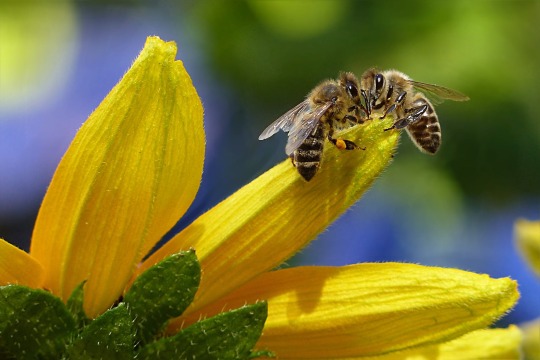
View On WordPress
#Bees#Biodiversity#conservation#ecosystem#food supply#habitat loss#pesticides#pollinators#sustainable farming#World Bee Day
21 notes
·
View notes
Note
Not sure if this is something you would know about but I’m currently writing a paper about how we visualise shorebird habitat loss in the western Americas specifically and part of this involves finding paintings, images, diagrams, that show what the habitat looked like before 1900 or so. It’s an art historical paper so it’s about visual culture and perception of habitat loss through time and I’m struggling to find any good images from before 1900 so I’m exhausting all resources. thank you x
Hi, @a-small-disgrace! That sounds like a really useful project for showing the long-term impact of human activity. If I were going to do that sort of thing on my little area of the coast, I would be contacting the local museum and historical society to see if they had any photos or art of specific locations, even if the landscape wasn't the main focus of the piece. Is this something you've already tried?
Also, if anyone else has any ideas, please chime in in the replies or reblogs.
#a-small-disgrace#art#art history#habitat loss#shorebirds#endangered species#extinction#birds#birdblr#nature wildlife#conservation#ecology#animals
10 notes
·
View notes
Text

National Dolphin Day 2024 世界海豚日
HEY HUMAN, SEE WHAT YOU DO!?
ANIMAN - BACKSCAR DOLPHIN
Instagram: milkdongcomics
Facebook: Milk DoNg Comics
#National Dolphin Day#世界海豚日#Dolphin#海豚#Habitat Loss#喪失棲息地#Water Pollution#水質污染#Underwater Noise Pollution#海底聲音污染#Vessel Collision#撞船意外#Over Fishing#過度捕魚#Endangered#瀕危#ANIMAN#HEY HUMAN SEE WHAT YOU DO!?#Milk DoNg#Milk DoNg Comics#Art#Drawing#Sketching#Painting#Illustration#Character Design#Color Pencil
3 notes
·
View notes
Text
A recent study led by researchers from the German Center for Integrative Biodiversity Research (iDiv), the Martin Luther University Halle-Wittenberg (MLU) and the non-profit conservation organization Re:wild shows that the threat of mining to the great ape population in Africa has been greatly underestimated. Their results have been published in Science Advances.
The rising demand for critical minerals, such as copper, lithium, nickel, cobalt, and other rare earth elements required for the large-scale transition to cleaner energy is causing a surge of mining in Africa, where a large share of those mineral resources is still unexploited.
This is driving deforestation of tropical rainforests, which are home to many species, including humans' closest living relatives, the great apes. The study estimates that the threat of mining to great apes in Africa has been greatly underestimated and that more than one-third of the entire population—nearly 180,000 gorillas, bonobos and chimpanzees—are at risk.
The researchers also highlight that because mining companies are not required to make biodiversity data publicly available, the true impact of mining on biodiversity and great apes, in particular, may be even higher.
continue reading
#africa#african great apes#primates#mineral mining#deforestation#habitat loss#hunting#biodiversity loss#environment
4 notes
·
View notes
Text
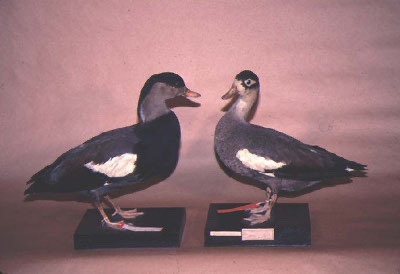
Crested Shelduck (Tadorna cristata)
This species was declared extinct in 1916, however sightings since have lead to some believing they survived much longer or are still alive.
In 1964, three Russian students saw 3 of these shelducks- two females and one male- with a flock of harlequin ducks, and there were further reported sightings in ‘71 and ‘85, although these are disputed.
There have been numerous unconfirmed reports, including a Chinese forest worker claiming to have shot and eaten two of them in 1984, and a Chinese bird collector recalling having attempted to shoot a female in 1983.
Due to these unconfirmed sightings, with the last confirmed sighting occurring in 1971, the Created Shelduck is not classified as extinct, but rather critically endangered. It is estimated that if this species is extant, it’s population is less than 50 individuals.
Hunting, over-collecting and habitat loss were thought to have been contributing factors to this bird’s possible extinction. However, if it is still alive, it’s population is now so low that accidental extinction is thought to be it’s biggest threat.
9 notes
·
View notes
